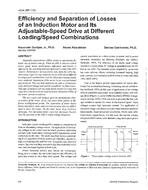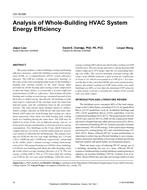The validity of a method to reduce the total number of computer simulations that must be run to determine the U-factors of a window product line with multiple glazing options is examined. The accuracy and limits of this method, which use the WINDOW4 and FRAME simulation programs, is evaluated by comparing edge, frame and total window U-factors calculated on the basis of single point FRAME simulations to those U-factors calculated on the basis of four-point FRAME simulations combined with linear interpolation of frame and edge U-factors by WINDOW4. The accuracy of this procedure is examined for two frame types – a low thermal conductivity wood-framed casement and a high- thermal conductivity aluminium-framed casement, using both aluminium spacers and insulating spaces over a wide range of glazing types. The effect of centre-of-glass U-factor, overall glazing thickness, and spacer type on frame and edge-of-glass U-factors is discussed. It is shown that the agreement between total window U-factors as calculated by the single-point and four- point simulation methods is better than 1% for double-glazed windows with insulating spacers and better than 2% for triple-glazed windows with insulating spacers.
KEYWORDS: double glazing, triple glazing, computer programs, calculating, validating, thermal insulation, heat loss, glazing, windows.
Citation: Symposium, ASHRAE Trans. 1994, Vol.100, Part 1,
Product Details
- Published:
- 1994
- File Size:
- 1 file , 960 KB
- Product Code(s):
- D-18042


